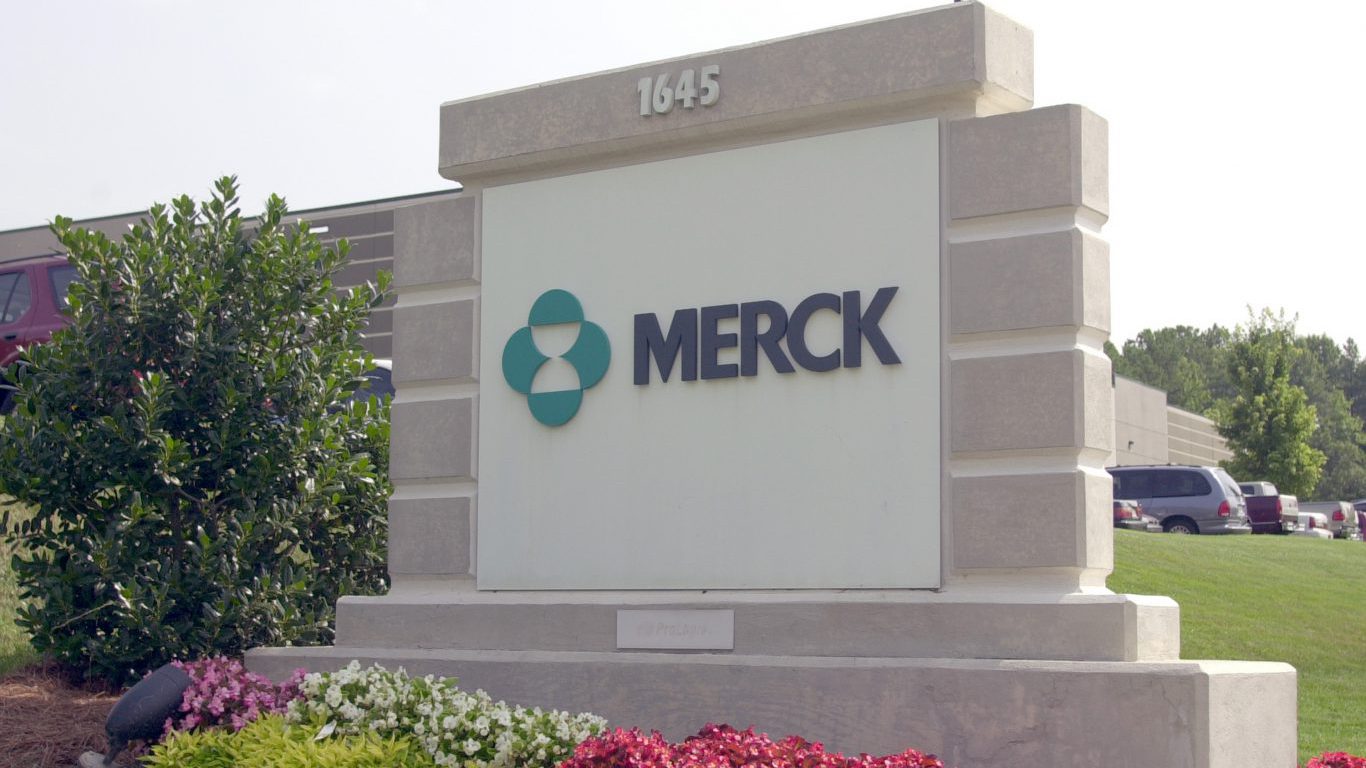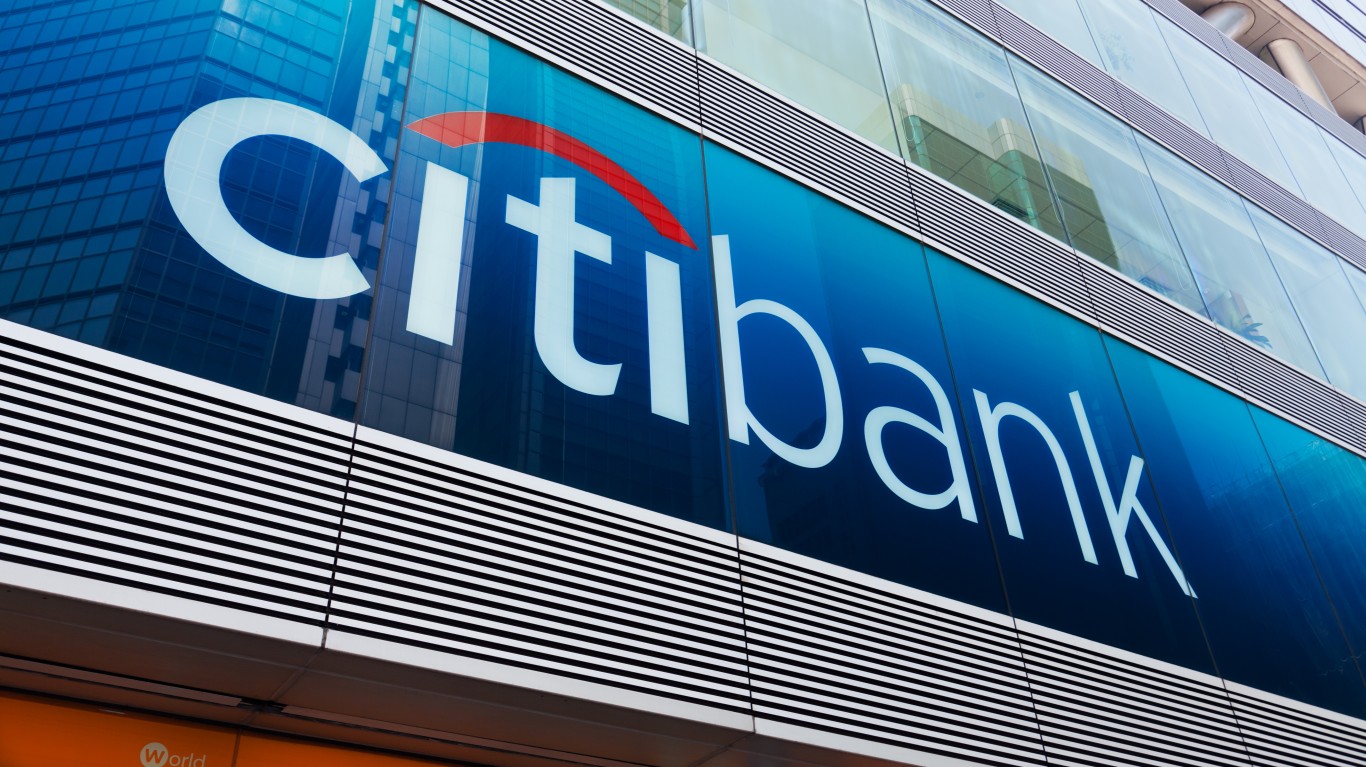
In Tuesday morning trading, the Dow Jones industrials were down 0.23%, the S&P 500 down 0.71% and the Nasdaq 0.9% lower.
After U.S. markets closed on Monday, First Republic Bank reported first-quarter results that wiped out a gain of more than 12% in the day’s regular trading session. Deposits dropped from $176.4 billion at the end of December to $104.5 billion at the end of March. Profits fell 33% year over year, and revenue fell by 13%. Shares traded down 26.4% Tuesday morning.
Cleveland-Cliffs beat estimates for both earnings per share (EPS) and revenue. The company said that its sales to automakers increased by 36% in the quarter, but revenue ended the period down 11.1% year over year. Even though the company expects “significant” EBITDA growth in the second quarter, investors were unconvinced. Shares traded down 4.4% early Tuesday.
Range Resources also beat estimates on both the top and bottom lines. Shares traded down 1.3%.
Before markets opened on Tuesday, General Electric beat both top-line and bottom-line consensus estimates. Revenue increased by 14.3% year over year, and the company issued in-line guidance for the full fiscal year. GE also raised the low end of its free cash flow estimate to $3.6 billion. Shares dipped 1.2% Tuesday morning.
UPS missed consensus EPS and revenue estimates and issued downside guidance for fiscal 2023. The package delivery giant cut its revenue estimate from a range of $97.0 billion to $99.4 billion to $97.0 billion, well short of the consensus estimate of $98.25 billion. UPS said it expects to spend $3 billion on share buybacks this year. Shares traded down 8.9%.
GE HealthCare also beat top-line and bottom-line estimates and reaffirmed previous guidance. Shares traded down 8.7%.
General Motors beat expectations on the top and bottom lines and raised fiscal-year EPS guidance to a new range of $6.35 to $7.35. The automaker also said it expects 2025 revenue to rise to $225 billion, a compound annual growth rate of about 12%, while electric vehicle production will reach 1 million units in North America by 2025. Shares traded down 3.1%.
Raytheon beat top-line and bottom-line estimates and issued in-line EPS guidance for the full fiscal year. Shares traded down 0.9%.
After U.S. markets close on Tuesday, Alphabet, Enphase Energy, Microsoft, PacWest Bancorp, and Visa are set to report quarterly earnings. Look for reports from Boeing, Norfolk Southern and Teck Resources the following morning. Later on Wednesday, Antero Resources, EQT and Meta Platforms take their turns in the earnings spotlight.
Here are previews of four companies set to report results first thing Thursday morning.
AbbVie
Pharmaceuticals giant AbbVie Inc. (NYSE: ABBV) posted a 52-week high in early January and is climbing near that level again. AbbVie’s best-selling Humira drug lost its patent protection in January, and the company’s first-quarter report will give some idea of how much negative impact that will have on a drug that generated $18.62 billion in sales last year. Last week, the company reported positive results from a phase 3 study of its Qulipta migraine-preventative treatment.
Brokerage firms have backed off a bit on AbbVie, with 12 of 27 having Buy or Strong Buy ratings and another 14 having Hold ratings. At a recent price of around $164.10, the shares trade just below the median price target of $165.00 is 12.6%. At the high price target of $200.00, the implied gain is 21.9%.
Estimates for the fourth quarter call for revenue of $12.23 billion, which would be down 19.1% sequentially and by 10.7% year over year, while adjusted EPS are pegged at $2.50, down 30.6% sequentially and 20.9% lower year over year. For the full 2023 fiscal year, analysts anticipate EPS of $10.98, a drop of 20.3% year over year, and sales of $52.66 billion, down 9.3%.
AbbVie stock trades at 15.0 times expected 2023 EPS, 14.7 times estimated 2024 earnings of $11.14 and 13.5 times estimated 2025 earnings of $12.14 per share. The stock’s 52-week trading range is $134.09 to $168.11, and AbbVie pays an annual dividend of $5.92 (yield of 3.65%). Total shareholder return over the past year was 9.97%.
Altria
The maker and U.S. distributor of Marlboro cigarettes, Altria Group Inc. (NYSE: MO), had climbed to a recent high in mid-February, after falling to a 52-week low in late September. In early March, Altria wrote down the last $250 million of its disastrous $13 billion investment in Juul. Last week, Altria and Juul settled a Minnesota lawsuit charging the companies with fueling a vaping epidemic among the state’s teenagers. A similar lawsuit began Monday in San Francisco, and thousands more are awaiting litigation.
Sentiment on the stock is positive but not strong. Of 18 analysts covering the shares, 10 have Hold ratings, while another six rate the stock at Buy or Strong Buy. At a share price of around $46.70, the implied gain based on a median price target of $50.00 is 7.1%. At the high price target of $70.00, the upside potential is about 49.9%.
First-quarter revenue is forecast at $7.89 billion, down 3.7% sequentially but up 1.5% year over year. Adjusted EPS are forecast to come in at $1.18, down 0.1% sequentially and 5.4% higher year over year. For the full 2023 fiscal year, Altria is expected to report EPS of $5.05, up about 4.4%, on sales of $21.04 billion, up 1.7%.
Altria stock trades at 9.2 times expected 2023 EPS, 8.8 times estimated 2024 earnings of $5.30 and 8.4 times estimated 2025 earnings of $5.57 per share. The stock’s 52-week range is $40.35 to $57.03, and Altria pays an annual dividend of $3.76 (yield of 8.15%). Total shareholder return over the past year is negative 8.69%.
American Airlines
Over the past 12 months, American Airlines Group Inc. (NASDAQ: AAL) has seen its share price decline by about 35.3%. Rivals United and Delta have posted 12-month losses of 15.8% and 22.8%, respectively, as a recovery in demand faltered, and investors have decided to wait to see what happens. Earlier this month, American upgraded its profit estimate, but the results still fell short of analysts’ expectations. The airline also forecast total revenue per available seat mile to rise, but some of that is likely to be lost to higher costs.
Analysts remain extremely cautious. Of 21 brokerages covering the stock, 15 have a Hold rating and four have Buy or Strong Buy ratings. At a share price of around $13.00, the upside potential based on a median price target of $17.00 is 30.8%. At the high target of $26.00, the upside potential is 50%.
First-quarter revenue is forecast at $12.21 billion, down 7.4% sequentially but up 37.2% year over year. American is expected to post adjusted EPS of $0.03, down 97.6% sequentially and much better than last year’s first-quarter loss of $2.32 per share. For the full 2023 fiscal year, the company is expected to post EPS of $2.35, up 370%, on revenue of $53.16 billion, up 8.6%.
American stock trades at 5.5 times expected 2023 earnings, 4.2 times estimated 2024 earnings of $3.08 and 2.8 times estimated 2025 earnings of $4.55 per share. The stock’s 52-week range is $11.65 to $20.15. The company does not pay a dividend. Its total return for the past 12 months was negative 35.88%.
Merck
Dow component Merck & Co. Inc. (NYSE: MRK) has added about 37% to its stock price over the past 12 months. The shares have recovered from a recent dip following Merck’s announced $10.8 billion acquisition of Prometheus Biotech. Last week, Merck and Moderna reported a study showing that users of Merck’s Keytruda along with Moderna’s cancer vaccine stayed cancer-free for 18 months longer than did Keytruda-only patients. The two firms are planning to begin a phase 3 study later this year.
Analysts have gotten more bullish on Merck stock in the past few months. Of 29 brokerages covering Merck, 20 have a Buy or Strong Buy rating and eight more have Hold ratings. At a share price of around $117.00, the implied upside on the stock is 7.3% at a consensus 12-month price target of $125.50. At the high target of $155.00, upside potential rises to 32.5%.
For the first quarter, Merck is expected to report sales of $13.81 billion, down 0.2% sequentially and by 13.1% year over year. Adjusted EPS are expected to reach $1.36, down 16.1% sequentially and by 36.4% year over year. For the 2022 fiscal year, EPS are forecast at $6.87, a decrease of 8.1% year over year, on sales of $58.28 billion, a decline of 1.7%.
Merck stock trades at 17.0 times expected 2023 EPS, 13.9 times estimated 2024 earnings of $8.40 and 12.4 times estimated 2025 earnings of $9.43 per share. The stock’s 52-week range is $83.05 to $116.81, and the company pays an annual dividend of $2.92 (yield of 2.53%). Total return over the past 12 months was 41.99%.
The Average American Has No Idea How Much Money You Can Make Today (Sponsor)
The last few years made people forget how much banks and CD’s can pay. Meanwhile, interest rates have spiked and many can afford to pay you much more, but most are keeping yields low and hoping you won’t notice.
But there is good news. To win qualified customers, some accounts are paying almost 10x the national average! That’s an incredible way to keep your money safe and earn more at the same time. Our top pick for high yield savings accounts includes other benefits as well. You can earn up to 3.80% with a Checking & Savings Account today Sign up and get up to $300 with direct deposit. No account fees. FDIC Insured.
Click here to see how much more you could be earning on your savings today. It takes just a few minutes to open an account to make your money work for you.
Our top pick for high yield savings accounts includes other benefits as well. You can earn up to 4.00% with a Checking & Savings Account from Sofi. Sign up and get up to $300 with direct deposit. No account fees. FDIC Insured.
Thank you for reading! Have some feedback for us?
Contact the 24/7 Wall St. editorial team.

 24/7 Wall St.
24/7 Wall St. 24/7 Wall St.
24/7 Wall St.



